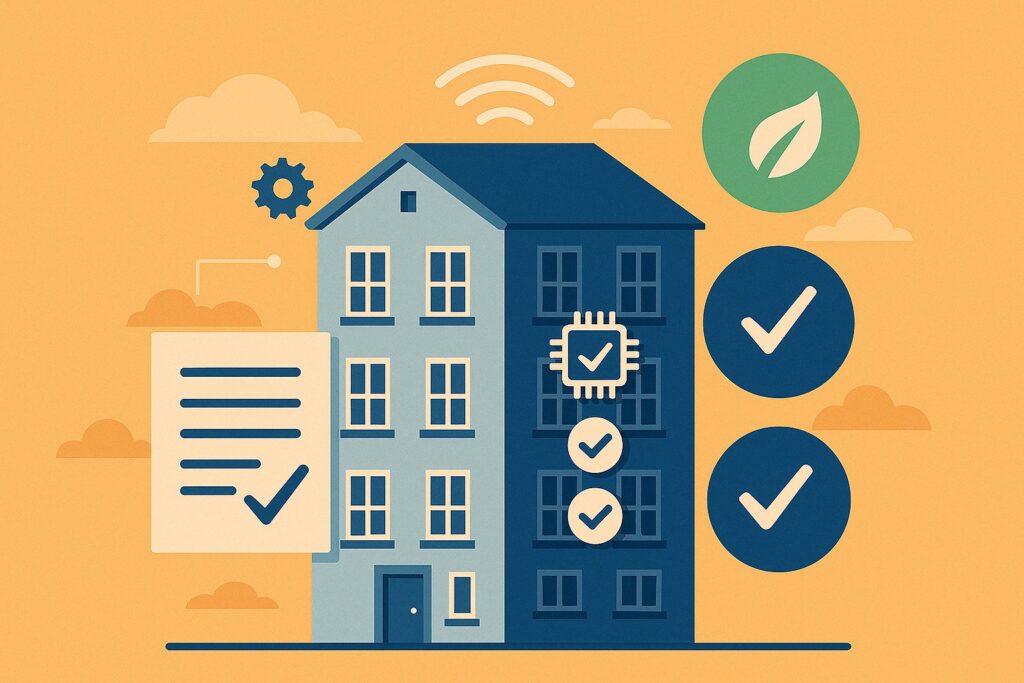
Ensuring high standards in the building sector through labels and norms
Scroll
In the rapidly evolving world of real estate, digital connectivity is becoming as crucial as energy efficiency and sustainability. As buildings become increasingly complex and technologically integrated, certification labels and technical norms serve as valuable tools to ensure high standards of quality.
Scroll
Why do labels exist?
Certification labels play a crucial role in ensuring that buildings meet specific performance standards, whether it’s in terms of energy efficiency, sustainability, occupant well-being, or digital infrastructure. They provide transparency, standardisation, and performance benchmarking. More importantly, they help developers, property owners, and tenants make informed decisions.
Comparing labels: A complementary approach
There is no single certification that encompasses all aspects of a building’s performance. Instead, different labels focus on specific areas, such as smart readiness, environmental sustainability, well-being, or digital infrastructure. “Labels don’t compete with each other; they are complementary tools that address different aspects of building performance,” explains Julien Larios, CEO of MyConnectivity.
The following comparative table provides an overview of key building certifications, illustrating how they complement each other in ensuring high-quality, future-ready buildings.
The vertical cabling norm: A technical standard for improved digital infrastructure
As part of the push for better digital infrastructure in real estate, a vertical cabling norm is being introduced to improve network performance in buildings. This standard provides detailed technical guidelines for telecom operators and electricians on how to implement vertical cabling between the basement and the apartment entry point in multi-dwelling buildings. Its goal is to ensure that fibre optic and high-speed connectivity infrastructure is properly installed, facilitating seamless digital access for residents.
The vertical cabling norm will be officially published in the Luxembourg Journal Officiel by November 1, 2025. Managed by MyConnectivity and the Luxembourg Institute of Standardisation, Accreditation, Safety and Quality of Products and Services (ILNAS), it is a direct outcome of the Gigabit Infrastructure Act of the European Commission, which mandates that all EU member states establish a national norm for internal building connectivity.
“The introduction of the vertical cabling norm is a significant step toward ensuring that buildings are equipped for the digital age,” says Julien Larios. “By setting clear technical standards, we are making sure that real estate professionals have a reliable framework to follow, ultimately benefiting residents and businesses alike.”
The European Commission’s push for better digital infrastructure through initiatives like the Gigabit Infrastructure Act demonstrates that connectivity is no longer an optional feature in real estate – it is a fundamental necessity. While certification labels provide a benchmark for sustainability and efficiency, technical norms ensure that digital connectivity complies with high standards. Together, these tools contribute to making buildings smarter, more resilient, and better equipped to meet the demands of the digital era.


